21 Leadership lessons from Jeff Bezos, Robert Iger and Whitney Johnson
ROBERT IGER, former Disney CEO – 9 leadership lessons
Robert (Bob) Iger is the foreman Chairman and CEO of The Walt Disney Company, one of the world’s largest and most admired media and entertainment companies.
Since becoming CEO in 2005, he oversaw the acquisitions of Pixar (2006), Marvel (2009), Lucasfilm (2012) and 21st Century Fox (2019).
In 2016 Disney expanded its international footprint by opening its first theme park and resort in Mainland China, Shanghai Disney Resort.
He also took the company to the next level using technology by creating an ambitious direct-to-consumer strategy that features the company’s various streaming services, including Disney+, which debuts on November 12.
His book, The Ride of a Lifetime: Lessons learned from 15 years as CEO of The Walt Disney Company launched on September 23.
Here are 9 leadership lessons that he shared in a LinkedIn article where he tells the story of the Lucasfilm acquisition and the making of the first Disney produced Star Wars film.
9 leadership lessons from Bob Iger:
- Talk to your team members to make sure everyone is on the same page and fully understand the stakes;
- Share the burden of what it means to be responsible with your team members;
- Communicate to your team members that you are their partner and not just a CEO putting pressure on them to deliver results;
- Be a resource and a collaborator, make them feel that they could call you at any moment to discuss any problem they might wrestling with;
- Remind your team that you believe in them and that there are no better minds to run your company’s projects;
- If you can’t make the deadline, it’s ok. Don’t rush to deliver your project on time even if this means taking a short-term hit to your bottom line. Sacrificing quality is never an option;
- Decide wisely when it’s worth engaging in any public discourse and when it’s not;
- When you run negotiations, let your partners know clearly about where you stand while allowing yourself to show empathy if the situation calls for it;
- A successful deal is a deal where you build trust with your partners and suppliers.
You have to try to recognize that when the stakes of a project are very high, there’s not much to be gained from putting additional pressure on the people working on it.
Robert Iger
JEFF BEZOS, former Amazon CEO – 6 leadership lessons
Amazon founder Jeff Bezos stepped down as the company’s CEO in 2021. He founded the eCommerce retailer 27 years ago in a garage when it “was only an idea” and people were asking him “What’s the internet?”.
Leveraging the power of the internet and thanks to his vision of what makes a successful company, today Amazon is the world’s largest online retailer of consumer products and a leader in the cloud computing segment.
According to Statista, in 2021, the online retail platform Amazon reported a net income of $33.36 billion, up 56% from a $21.3 billion net income in the previous year.
Leadership lessons from Jeff Bezos:
- Move quickly to solidify and extend your current position
In 1997, with big tech companies like Microsoft and AOL expressing interest in online commerce, Bezos saw a window of opportunity.“Our goal is to move quickly to solidify and extend our current position while we begin to pursue online commerce opportunities in other areas. We see substantial opportunity in the large markets we are targeting”, he writes in his 1997 shareholder letter. I remind you that, at the time, Amazon was still selling books.
- Set out to delight your customers
Jeff believes complaining customers are a company’s most valuable resource for growth. They reveal blind spots that employees or managers could not otherwise identify giving the business the opportunity to improve and develop. Amazon’s focus on customer obsession is one of its underlining factors for success.
- Make bold investment decisions
At the heart of Amazon’s investments is the customer. Every investment that Amazon makes is to further improve customer satisfaction and experience by developing systems, infrastructure and service.
- Your employees must think like an owner
Jeff acknowledged early on that hiring the right people was paramount if Amazon was to be successful and achieve its objectives. “Setting the bar high in our approach to hiring has been, and will continue to be, the single most important element of Amazon.com’s success.”The retailer behemoth compensates its employees in Amazon stock than cash because becoming stockholders changes their mindset.
- Embrace external trends
Businesses that adapt to the latest technological trends and customer behaviour changes evolve and survive. Businesses that resist change, don’t survive. His advice to every company founder is to acknowledge powerful external trends like AI and machine learning and embrace them quickly.
- Make high-quality decisions fast
Large organizations like Amazon have many things going for them with one downside: they are slow at making decisions. Jeff didn’t allow this to happen to Amazon.He created a system of making high-quality decisions fast which relies entirely on the Day 1 mindset. Day 1 companies are startups, nimble and agile, bursting with vitality. Day 2 companies are already heading for the end. Amazon is a Day 1 company.
WHITNEY JOHNSON, CEO of Disruption Advisors – 6 leadership lessons
Whitney Johnson is a world-leading expert on developing high-growth teams and one of the leading business thinkers in the world as per Thinkers50.
With +20 years of research, consulting & coaching, Whitney Johnson helps leaders to acquire the necessary skills for leading teams with confidence and a strategic approach.
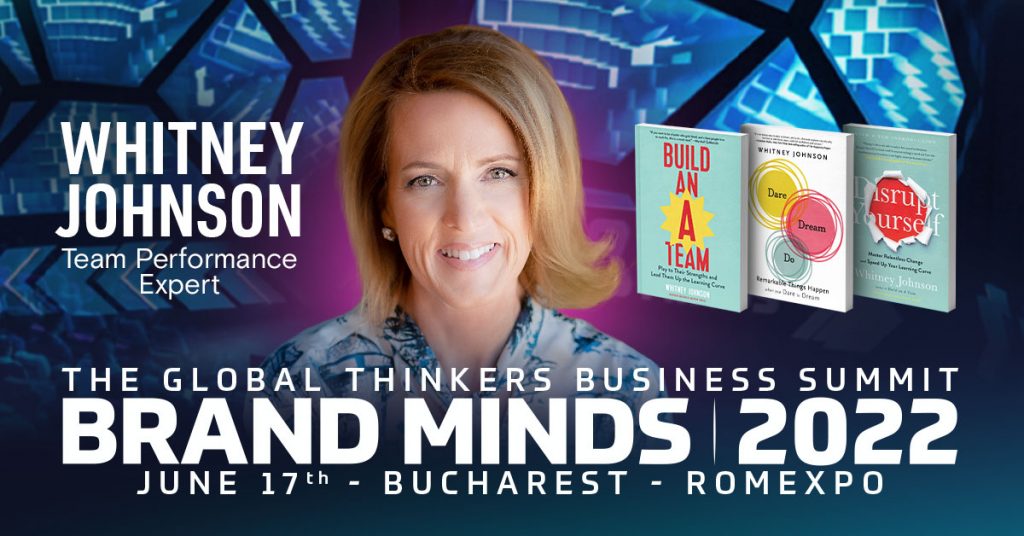
Leadership lessons from Whitney Johnson:
1.Take your business to the next level by putting the power of disruptive innovation to work.
“When you are driven by discovery, you take a step forward, gather feedback and adapt.”
2. Change your business strategy as often as necessary.
“70% of all successful new businesses end up with a strategy other than the one they initially pursued.”
3. Hire leaders whose higher goals align with the goals and objectives of your business.
“Before hiring anyone in your team, check to see if their why intersects with the why of the organization.”
4. Always be looking to develop the talent in your business.
“If you develop talent, there is absolutely no condition in which your company actually loses.”
5. Employees are motivated by more than pay raises, bonuses and other extrinsic rewards.
“When we are no longer getting an emotional reward from our career, we may actually end up doing our job poorly.”
6. Encourage your employees to disrupt themselves.
“Make disruption safe. Make it routine. Make it a human resources strategy.”
We are thrilled to have Whitney Johnson on the stage at BRAND MINDS 2022, where she’ll deliver a speech about The best tactics for building an extraordinary team.
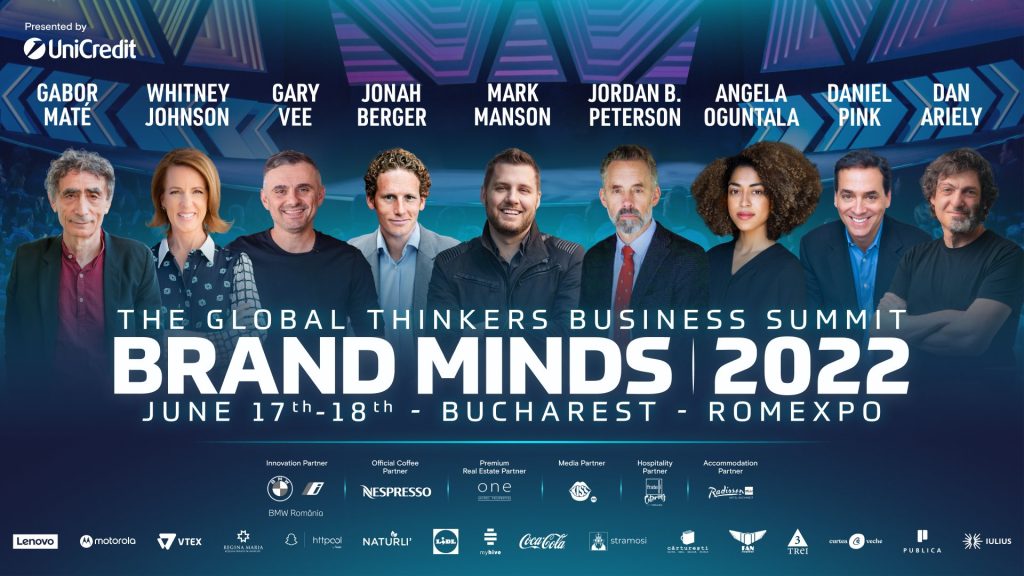
Jeff Bezos is stepping down as Amazon CEO. What is his legacy?
In a letter published yesterday, Jeff Bezos announced he is stepping down as Amazon CEO later this year. Andy Jassy, Amazon’s head of cloud computing will be taking the helm.
Jeff Bezos founded the eCommerce retailer 27 years ago in a garage when it “was only an idea” and people were asking him “What’s the internet?”.
Leveraging the power of the internet and thanks to his vision on what makes a successful company, today Amazon is the world’s largest online retailer of consumer products and a leader in the cloud computing segment.
With a market value of 1.6 trillion dollars, Amazon is in the Top 5 big tech US companies and it doesn’t look like it’s going to slow down.
“Being the CEO of Amazon is a deep responsibility, and it’s consuming. When you have a responsibility like that, it’s hard to put attention on anything else”, he writes. In his new role as Executive Chair of the Amazon Board, Jeff Bezos will still watch closely over the company but will dedicate his time and energy to other Amazon initiatives such as the Day 1 Fund, the Bezos Earth Fund, Blue Origin, The Washington Post “and my other passions”.
As Jeff Bezos steps down as CEO of the world’s largest eCommerce retailer, let’s take a look at what he leaves behind, his legacy.
Jeff’s business strategy is his legacy.
Here are eight essential factors of Jeff’s successful business strategy for Amazon:
1. Move quickly to solidify and extend your current position
In 1997, with big tech companies like Microsoft and AOL expressing interest in online commerce, Bezos saw a window of opportunity.
“Our goal is to move quickly to solidify and extend our current position while we begin to pursue online commerce opportunities in other areas. We see substantial opportunity in the large markets we are targeting”, he writes in his 1997 shareholder letter. I remind you that, at the time, Amazon was still selling books.
2. Set out to delight your customers
Jeff believes complaining customers are a company’s most valuable resource for growth. They reveal blind spots that employees or managers could not otherwise identify giving the business the opportunity to improve and develop.
Amazon’s focus on customer obsession is one of its underlining factors for success.
3. Make bold investment decisions
At the heart of Amazon’s investments is the customer.
Every investment that Amazon makes is to further improve customer satisfaction and experience by developing systems, infrastructure and service.
4. Become aware of proxies
In his 2016 shareholder letter, Jeff talks about the danger of allowing proxies to gain power within the company.
Proxy is something or someone who acts as a substitute. This is when the process has become more important than the result and replaced it. It’s the process as a substitute for the outcome.
When someone in the company starts saying This is how we’ve always done it, it’s time for a change.
5. Your employees must think like an owner
Jeff acknowledged early on that hiring the right people was paramount if Amazon was to be successful and achieve its objectives. “Setting the bar high in our approach to hiring has been, and will continue to be, the single most important element of Amazon.com’s success.”
The retailer behemoth compensates its employees in Amazon stock than cash because becoming stockholders changes their mindset.
6. Embrace external trends
Businesses that adapt to the latest technological trends and customer behaviour changes evolve and survive. Businesses that resist change, don’t survive.
His advice to every company founder is to acknowledge powerful external trends like AI and machine learning and embrace them quickly.
7. Make high-quality decisions fast
Large organizations like Amazon have many things going for them with one downside: they are slow at making decisions.
Jeff didn’t allow this to happen to Amazon.
He created a system of making high-quality decisions fast which relies entirely on the Day 1 mindset. Day 1 companies are startups, nimble and agile, bursting with vitality. Day 2 companies are already heading for the end. Amazon is a Day 1 company.
8. Implement high standards
Amazon’s obsession with customer satisfaction has led to a number of outstanding product innovations (Alexa, AWS) and excellent customer experience (Amazon Go, 1-click purchases).
What does it take to achieve such results? Implementing high standards in the company.
At the core of Amazon’s supremacy is innovation. So it’s no surprise that Jeff Bezos ends his letter to the employees with an encouragement to continue down the path of innovation.
Keep inventing, and don’t despair when at first the idea looks crazy. Remember to wander. Let curiosity be your compass. It remains Day 1.
Jeff
Join the Conversation
We’d love to hear what you have to say.
Get in touch with us on our LinkedIn Page, Facebook Page, Twitter or TikTok.
Jeff Bezos: 8 business lessons from his letters to shareholders
According to recent industry figures, Amazon is the leading eCommerce retailer in the United States with 38,7% share of retail eCommerce sales (source).
Here are the latest Amazon statistics:
- $280.5 billion in net sales
- $11.59 billion in net income
- The most popular product categories: Electronics
- Number of paying Amazon Prime members worldwide: 150 million
- Share of US Amazon customers who are Amazon Prime members: 65%
- Unique monthly US visitors to Amazon sites: 208 million
- Share of direct traffic to Amazon.com: 56.47%
- US Amazon Prime Day conversion rate: 13.5%
- Average annual spending of Amazon Prime members: $1,400
- The most important reason for US shoppers to shop on Amazon: fast, free shipping
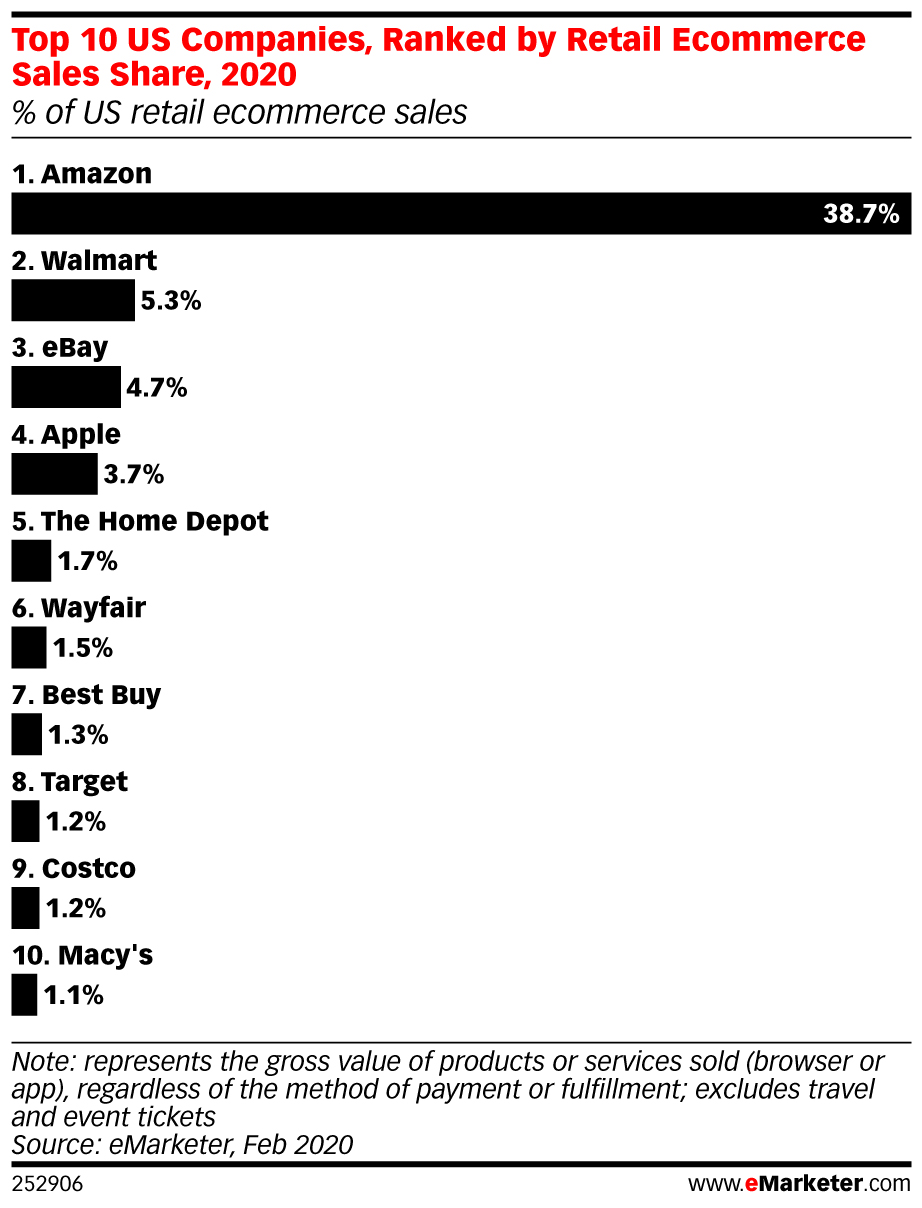
Amazon is #1 in the U.S. Let’s zoom out and take a global approach.
Is the giant retailer maintaining its top place when compared to other eCommerce retailers?
As you can see below, the answer is yes.
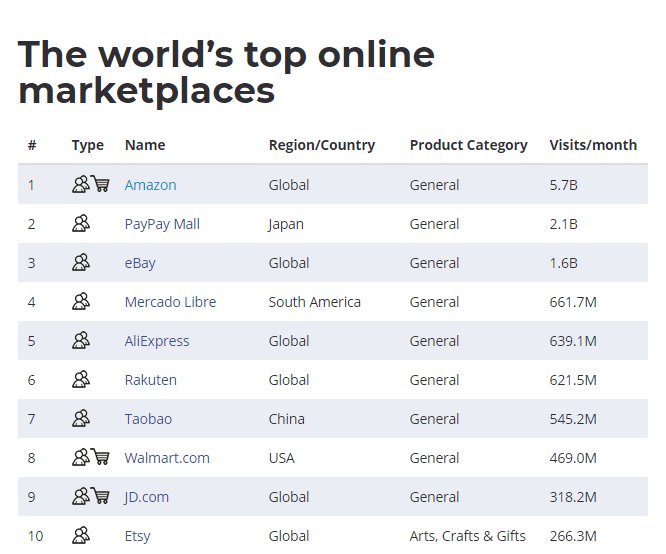
image source: webretailer.com
Amazon.com receives twice the monthly number of visitors as #2, the Japanese retailer PayPay Mall.
If the eCommerce retail industry were a marathon, Amazon would be the front runner, leading the other runners and winning by a landslide.
What makes Amazon so successful and powerful?
What drives this marathon runner to push harder year after year?
How is Jeff Bezos coaching the Amazon collective?
For the purpose of this article, I have analysed Jeff Bezos’ annual letters to shareholders from 2016, 2017, 2018 and 2019. As any Jeff Bezos fan knows, each of his letters ends with a copy of his famous 1997 letter so I have included it in my analysis.
Jeff Bezos: 8 business lessons from his annual letters to shareholders
1. Move quickly to solidify and extend your current position
At the end of 1997, in just three years since starting the company, Amazon.com’ revenue had increased by 838%, selling to more than 1.5 million customers while extending its market leadership in an increasingly aggressive competitive environment (source).
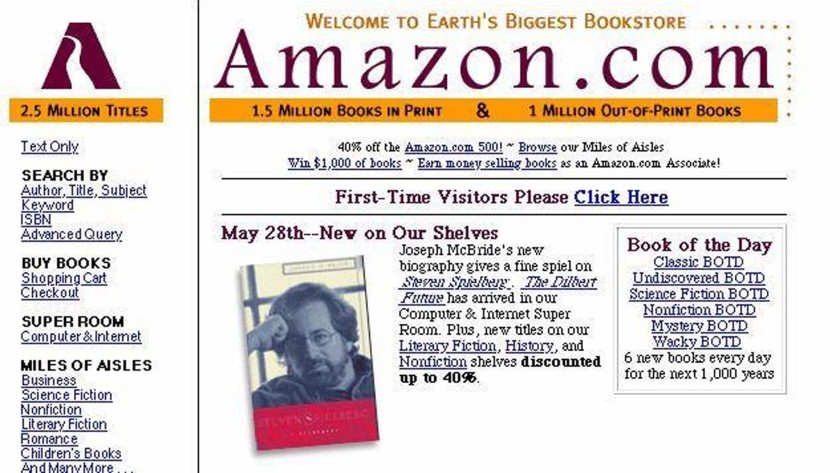
image source: latimes.com
1997 is the year Amazon filed to go public and was preparing to compete with big tech companies AOL and Microsoft which had announced their intention to derive a substantial portion of their revenues from online commerce.
I remind you that Amazon was still selling books at that time.
But that didn’t discourage Bezos who had a strong belief in the online opportunity as expressed in his 1997 letter:
We have a window of opportunity as larger players marshal the resources to pursue the online opportunity and as customers, new to purchasing online, are receptive to forming new relationships. The competitive landscape has continued to evolve at a fast pace. Many large players have moved online with credible offerings and have devoted substantial energy and resources to building awareness, traffic, and sales. Our goal is to move quickly to solidify and extend our current position while we begin to pursue the online commerce opportunities in other areas. We see substantial opportunity in the large markets we are targeting.
2. Set out to delight your customers
After reading Jeff’s letters, if I were to choose only one factor responsible for Amazon’s success it would be his focus on customers.
Complaining customers are a company’s most valuable resource for growth. They reveal blind spots that employees or managers could not otherwise identify giving the business the opportunity to improve and develop.
In his 2016 letter, Jeff says “customers are always beautifully, wonderfully dissatisfied, even when they report being happy and business is great.” In his 2018 letter, he defines them as “divinely discontent”.
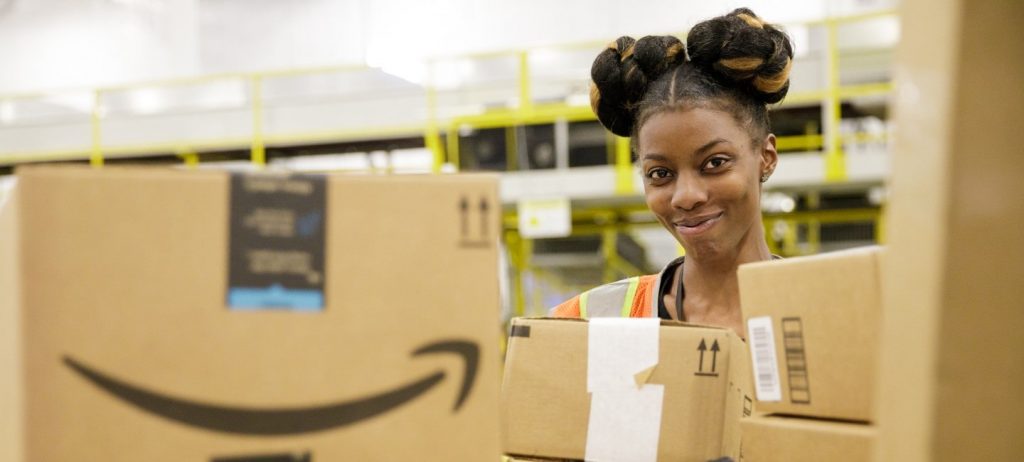
image source: blog.aboutamazon.com
Achieving the goal of delighting customers means developing a powerful system built on true customer obsession.
So here’s the Amazon customer-focused trifecta:
- Listen to your customers and use this data to offer them something they simply could not get any other way
- Improving the shopping experience never ends so pursue it with tenacity and persistence
- Invent on behalf of your customers. Your customers will always want something better and it’s up to you to figure out what exactly it is they expect because, and here’s your challenge, they don’t know what to ask for.
We must invent on their behalf. We have to tap into our own inner imagination about what’s possible.
Jeff Bezos
That’s how AWS, one of Amazon’s most successful services came to be. No customer specifically asked for it and yet that’s what they needed. In 2019, AWS generated $10.2 billion in net sales, up 33% from last year.
Remarkable customer experience starts with heart, intuition, curiosity, play, guts, taste. You won’t find any of it in a survey.
Jeff Bezos
3. Make bold investment decisions
In his 1997 letter, Jeff talks about investments and the criteria underlining his investment decisions.
At the heart of Amazon’s investments is the customer. Every investment that Amazon makes is to further improve customer satisfaction and experience by developing systems, infrastructure and service.
Is the investment going to help the company come closer to its goal of achieving market leadership? Is the investment going to support the company achieve its long-term business objectives? If the answer is yes, then the investment gets the green light.
Always measure the effectiveness of your investments. Establish a set of KPIs to measure the results of your investments, discard the ones that don’t perform as expected and double down on the investments that work. Learn from both your failures and your successes.
If you see a sufficient probability of gaining market leadership advantages, go for it and be bold. There’s no need to start small, go bold!
4. Become aware of proxies
What is a proxy? Proxy is something or someone who acts as a substitute. In his 2016 letter, Jeff talks about the danger of allowing proxies to gain power within the company.
Have you ever heard someone say when referring to a bad outcome Well, we followed the process? That is when the process has become more important than the result and replaced it. It’s the process as a substitute for the outcome.
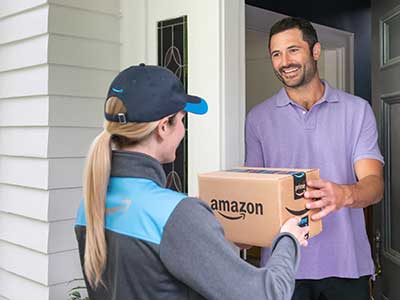
image source: amazon.com
This is a dangerous place for a company and could contribute to its downfall. Jeff’s advice is to become aware of any proxies influencing your business outcomes and eliminate them. Don’t allow market research and customer surveys to become proxies for your customers.
Good inventors and designers deeply understand their customer. They spend tremendous energy developing that intuition. They study and understand many anecdotes rather than only the averages you’ll find on surveys. They live with the design.
Jeff Bezos
5. Your employees must think like an owner
Jeff acknowledged early on that hiring the right people was paramount if Amazon was to be successful and achieve its objectives. “Setting the bar high in our approach to hiring has been, and will continue to be, the single most important element of Amazon.com’s success.”
Amazonians are committed to the company’s core values and goals. They are passionate about working to build something important, something that matters to their customers, something that they can all tell their grandchildren about. Jeff and his hiring team focus on attracting and retaining versatile and talented employees.
“When I interview people I tell them, You can work long, hard, or smart, but at Amazon.com you can’t choose two out of three”, Jeff said in his 1997 letter.
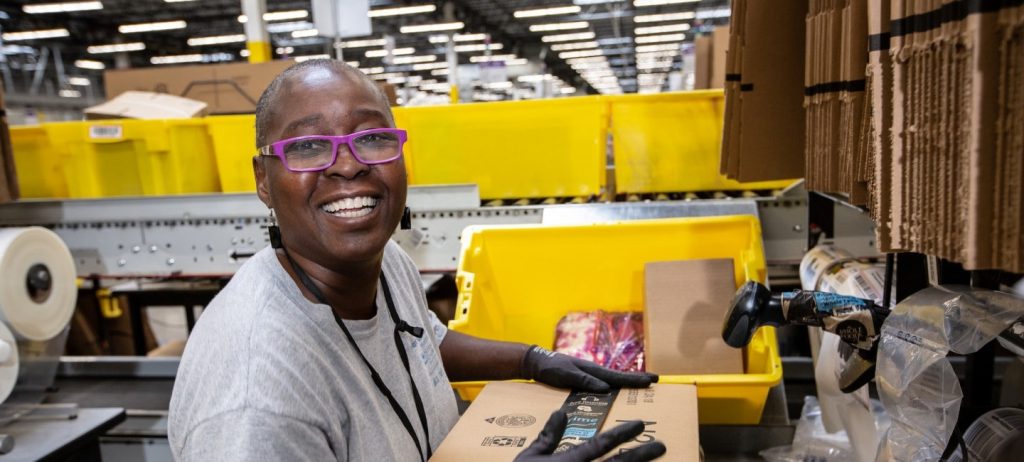
image source: amazon.com
How is Amazon motivating its valuable employees?
The company provides them with two options to choose from: receive compensation in Amazon stock or cash. The retailer would rather compensate its employees in Amazon stock than cash because becoming stockholders changes their mindset. Jeff expects employees to think and act like an owner. To achieve this, employees must actually be owners.
How do you support your employees to take ownership of their work? Do you believe employees thinking and acting like owners makes a difference in the quality of their work?
6. Embrace external trends
Today the business environment is shaped by a wide variety of external factors ranging from technology, online and digital to cultural shifts, changes in customer behaviour etc. Businesses that have adapted to these trends and transformed, as a result, survived. Businesses that have resisted change, didn’t.
Jeff talks about external trends and why businesses should embrace them in his 2016 letter. His advice to every company founder is to acknowledge powerful external trends and embrace them quickly.
Depending on the size of your organization, achieving this could be easy or difficult. It’s somewhat easier for a startup to embrace trends than for a large organization. That’s why it’s imperative for large companies to become agile.
When talking about external trends, Jeff is referring to machine learning and AI.
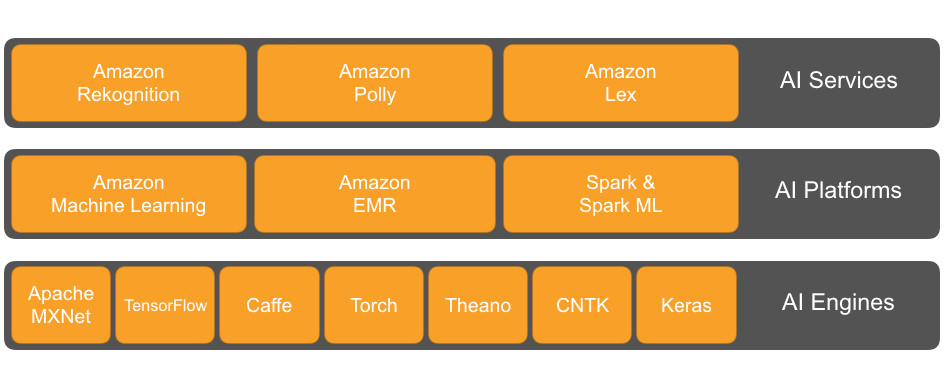
image source: aws.amazon.com
Amazon.com has been working on developing its own machine learning-powered recommendation algorithm since the late 1990s.
In 2003, the development team at Amazon published a paper describing a new recommendation algorithm. The recommendation algorithm they created was called the item-to-item collaborative filter and allowed the online store to radically change for each customer based on their interests.
A 2013 McKinsey article reported that Amazon’s machine learning engine was responsible for 35% of its online sales. I’m sure this number is higher today.
Jeff points out that machine learning drives Amazon’s algorithms for demand forecasting, product search ranking, product and deals recommendations, merchandising placements, fraud detection, translations.
But much of the impact of machine learning is less visible but equally important. Machine learning and AI have a prominent role in the company’s future.
7. Make high-quality decisions fast
Amazon is leading the global eCommerce landscape falling back on 26 years of experience in the industry. It’s one of the big five tech companies, FAAMG—Facebook, Amazon, Apple, Microsoft, and Google and the largest employer among them, with 840,000 employees.
Large organizations have many things going for them (attracting talent, high-value wages, global development, technology advancements etc) with one downside: they are slow at making decisions.
Jeff calls these established large organizations Day 2 companies. Day 1 companies are startups, nimble and agile, bursting with vitality. Day 2 companies are already heading for the end.
Day 2 is stasis. Followed by irrelevance. Followed by excruciating, painful decline. Followed by death. And that is why it is always Day 1.
Jeff Bezos
Twenty-six-year-old Amazon is technically a Day 2 company but with a Day 1 mindset. It’s what allows the giant retailer to keep the energy and dynamism of a lean startup while being #1 in the global eCommerce industry.
How do you make high-quality decisions fast?
Jeff gives the following pointers in this regard:
- Never use a one-size-fits-all decision-making process;
- Make decisions with around 70% of the information you wish you had. If you wait for 90%, in most cases, you’re probably being slow;
- Be good at quickly recognizing and correcting bad decisions. Being wrong may be less costly than you think, whereas being slow is going to be expensive for sure;
- Recognize true misalignment issues early and escalate them immediately;
- Use the phrase “disagree and commit”. If you have a conviction on a particular direction even though there’s no consensus, ask everyone else to gamble with you on it and you’ll probably get a quick yes.
Choose to have the scope and capabilities of a large company and the spirit and heart of a small one.
Jeff Bezos
8. Implement high standards
Staying ahead of the ever-rising customer expectations is one of Amazon’s objectives.
The giant retailer’s obsession with customer satisfaction has led to a number of product innovations (Alexa, AWS) and excellent customer experience (Amazon Go, the no checkout lines physical store, Prime Air, Amazon’s 30-minute delivery service via drones, one-click purchases).
What does it take to achieve such results?
A high-standard mindset.
Here’s what Jeff says about implementing high standards in your company:
- Expose your people to high standards. High standards are teachable and contagious;
- Articulate a few core principles of high standards which helps accelerate the rate of learning;
- Teach high standards in every arena of interest. High standards are domain-specific;
- Recognize the standard and have realistic expectations on scope. To achieve high standards yourself or as part of a team, you need to form and proactively communicate realistic beliefs about how hard something is going to be.
What are the benefits of high standards?
Building better products and services for customers, recruiting and retaining talent and teaching employees how to be professional starting with doing the most invisible work.
People have a voracious appetite for a better way, and yesterday’s ‘wow’ quickly becomes today’s ‘ordinary’.
Jeff Bezos
Join the Conversation
We’d love to hear what you have to say.
Get in touch with us on our LinkedIn Group, Facebook Group or Twitter.
Jeff Bezos – Amazon, the new robots company
Every fan of technology and sci-fi would have loved to be in the shoes of Jeff Bezos, Amazon’s CEO, as he piloted a huge robot, that looked takes straight from Transformers, at an Amazon-organized annual conference for robotics enthusiasts – Machine Learning, Home Automation, Robotics and Space Exploration (MARS)- in Palm Springs, Calif. Photos and clips of the humanoid robot, which is four-meters-tall (13-foot) and weighs 1.5 tons, first surfaced online last year, however sceptics have questioned the authenticity of footage released showing the robot walking.
Bezos was filmed controlling the robot’s arms in the latest footage; however it was attached to some chains and was seemingly unable to actually walk around by itself.
According to livescience.com, the robot does not pick anything up in the video, either, which is notable because its developers say that one of their goals is to create piloted robots for real-world jobs, like cleaning up the Fukushima nuclear power plant that was damaged in 2011 when a massive earthquake and tsunami struck Japan. “So far, none of the footage of the mech has shown it manipulating objects. The massive bot also runs on external power, which means that, so far, it’s unable to work untethered,” added Stephanie Pappas for Live Science.
The suit was created by robotics expert Vitaly Bulgarov, a veteran of science fiction blockbusters, for the South Korean technology company.
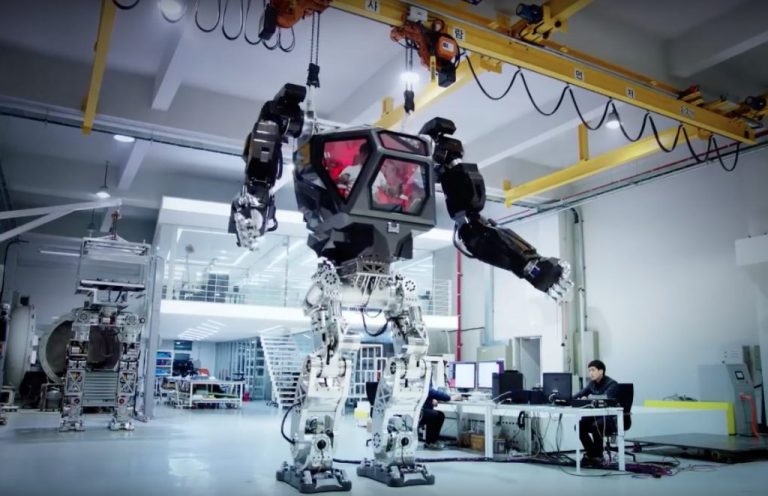
“Everything we have been learning so far on this robot can be applied to solve real-world problems,” the designer previously said on his Facebook page.
Bulgarov is famous for working on film series such as Transformers, Robocop and Terminator.
According to The Telegraph, Method-2 is seen as a test-bed for various technologies that will allow the creators to build any type and size of robot in future.











